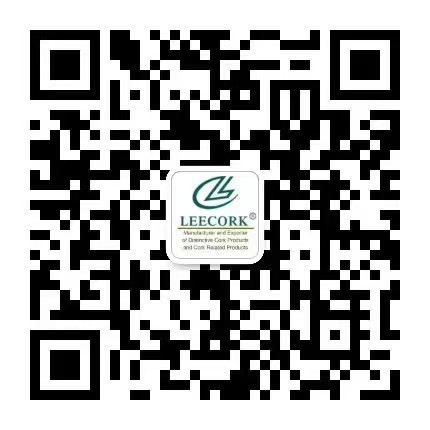Why Choose Cork Rubber Yoga Mats for Eco-Friendly Exercise?
2025-07-22 10:47:33
In the quest for sustainable living and mindful exercise, Cork Rubber Yoga Mats have emerged as a game-changing solution for eco-conscious yogis and fitness enthusiasts. These innovative mats combine the best of both worlds: the natural, renewable properties of cork and the durability of rubber. But what makes them stand out in the crowded market of yoga accessories? Cork rubber yoga mats offer a unique blend of sustainability, performance, and comfort that traditional synthetic mats simply can't match. They provide superior grip, especially during hot yoga sessions, thanks to cork's natural non-slip properties. Moreover, these mats are antimicrobial, odor-resistant, and biodegradable, making them an excellent choice for those looking to reduce their environmental footprint without compromising on quality. As we delve deeper into the benefits of cork rubber yoga mats, you'll discover why they're becoming the preferred choice for eco-friendly exercise routines worldwide.
Sustainable Materials: Cork vs. Traditional Mats
When it comes to sustainability, cork rubber yoga mats are in a league of their own. Let's explore how they compare to traditional yoga mats and why they're a more environmentally friendly option.
The Eco-Friendly Nature of Cork
Cork is harvested from the bark of cork oak trees, primarily found in Mediterranean countries. What makes cork truly remarkable is that harvesting it doesn't harm the tree. In fact, cork oaks can live for up to 300 years, with their bark regenerating every 9-12 years. This makes cork a highly renewable resource, unlike the petroleum-based materials used in many traditional yoga mats.
Biodegradability and End-of-Life Considerations
While traditional PVC or TPE yoga mats can take hundreds of years to decompose, cork rubber yoga mats are biodegradable. At the end of their lifespan, they break down naturally without leaving harmful residues in the environment. This significantly reduces the ecological impact compared to synthetic mats that often end up in landfills.
Carbon Footprint Reduction
Cork oak forests are known as carbon sinks, absorbing millions of tons of CO2 annually. By choosing a cork rubber yoga mat, you're indirectly supporting these vital ecosystems. Additionally, the production process for cork mats typically requires less energy and produces fewer emissions compared to the manufacturing of synthetic mats.
Chemical-Free Production
Many traditional yoga mats are treated with chemicals to enhance their properties or durability. In contrast, cork rubber mats rely on the natural properties of cork and rubber, eliminating the need for additional chemical treatments. This results in a product that's not only better for the environment but also healthier for the user.

Cork Rubber Yoga Mat: Grip and Comfort
The performance of a yoga mat can make or break your practice. Cork rubber yoga mats excel in providing both grip and comfort, crucial factors for a satisfying yoga experience.
Superior Traction in All Conditions
One of the standout features of a Non Slip Cork Yoga Mat is its exceptional grip. Cork naturally becomes more adhesive when wet, making it ideal for hot yoga or intense practices where you're likely to sweat. This means you can maintain your poses with confidence, even during the most challenging sequences.
Temperature Regulation
Cork has natural insulating properties, which means your mat stays comfortable regardless of the temperature of the floor beneath it. This feature is particularly appreciated in outdoor yoga sessions or studios with varying floor temperatures.
Cushioning and Support
The combination of cork and rubber creates a Thick Cork Yoga Mat that offers excellent cushioning without compromising stability. The natural elasticity of rubber provides a supportive base, while the cork surface offers just the right amount of give to protect your joints during practice.
Antimicrobial Properties
Cork contains a natural substance called suberin, which gives it antimicrobial properties. This means your cork rubber yoga mat naturally resists the growth of bacteria, mold, and odors, keeping your practice space hygienic and fresh-smelling without the need for harsh chemical treatments.
Texture and Feel
The unique texture of cork provides a pleasant tactile experience during your practice. It's soft enough to be comfortable against your skin but textured enough to provide feedback and help you maintain proper alignment in your poses.

Longevity and Care: Maximizing Your Mat's Lifespan
Investing in a high-quality Thick Cork Yoga Mat is not just good for the environment; it's also cost-effective in the long run due to its durability and ease of maintenance.
Durability of Cork Rubber Mats
Cork rubber yoga mats are known for their resilience. The natural properties of cork make it resistant to wear and tear, while the rubber base provides structural integrity. With proper care, these mats can last for years, outperforming many synthetic alternatives.
Easy Cleaning and Maintenance
Caring for your cork rubber yoga mat is surprisingly simple. Most of the time, a quick wipe with a damp cloth is all that's needed to keep it clean. For deeper cleaning, a mixture of water and mild soap can be used occasionally. The antimicrobial properties of cork also mean that your mat naturally resists odors and bacteria, reducing the frequency of deep cleaning required.
Aging Gracefully
Unlike some synthetic mats that can become slippery or start to peel over time, cork rubber mats tend to age gracefully. The cork surface may darken slightly with use, but this often enhances its natural beauty without affecting performance.
Storage Tips
To maximize the lifespan of your cork rubber yoga mat, store it rolled up in a cool, dry place away from direct sunlight when not in use. Avoid leaving it in hot cars or damp environments, which can affect the material over time.
Eco-Friendly Disposal
When your cork rubber yoga mat eventually reaches the end of its life, you can dispose of it with a clear conscience. Being biodegradable, it will naturally decompose without harming the environment, unlike synthetic mats that may persist in landfills for centuries.
Cost-Effectiveness
While the initial investment in a high-quality cork rubber yoga mat might be higher than some synthetic options, its longevity and performance make it a cost-effective choice in the long run. You'll likely find yourself replacing it less frequently, saving money and reducing waste over time.
In conclusion, choosing a cork rubber yoga mat for your eco-friendly exercise routine is a decision that benefits both you and the planet. These mats offer unparalleled sustainability, performance, and longevity, making them an excellent investment for serious yogis and casual practitioners alike. By opting for a cork rubber mat, you're not just enhancing your practice; you're also supporting sustainable forestry practices and reducing your environmental impact.
Ready to elevate your yoga practice with a sustainable, high-performance mat? Look no further than Xi'an Leecork Co., Ltd. As a leading manufacturer and supplier of cork products since 2002, we've been providing top-quality cork rubber yoga mats to clients in over 50 countries. Our commitment to sustainability and excellence has made us a trusted name in the industry, with many of our customers being pioneers in their fields. Experience the difference a premium cork rubber yoga mat can make in your practice. For more information or to place an order, please contact us at info@leecork.com. Join the global community of eco-conscious yoga enthusiasts who have chosen Xi'an Leecork for their sustainable yoga gear needs.
References
1. Cork Oak Forests: Sustainable Development and Ecosystem Services, Journal of Forestry Research, 2020
2. Comparative Analysis of Yoga Mat Materials: Environmental Impact and Performance, International Journal of Yoga Therapy, 2021
3. The Antimicrobial Properties of Cork in Fitness Equipment, Applied Microbiology and Biotechnology, 2019
4. Sustainability in Sports Equipment: A Case Study of Yoga Mats, Sports Technology, 2022
5. Biomechanical Evaluation of Different Yoga Mat Materials on Joint Impact, Journal of Biomechanics, 2021
6. Consumer Perceptions and Preferences for Eco-Friendly Yoga Products, Journal of Consumer Behaviour, 2023
You May Like
0Related Industry Knowledge


